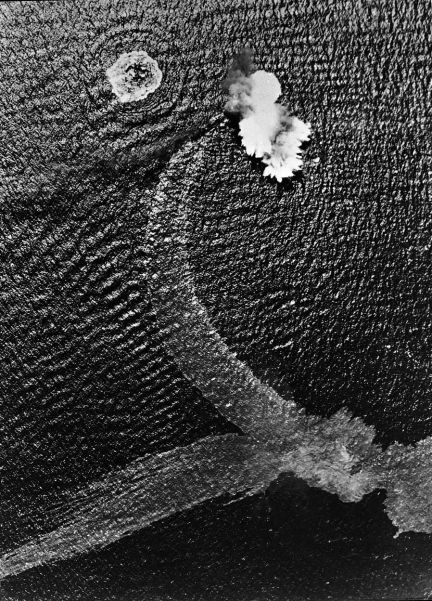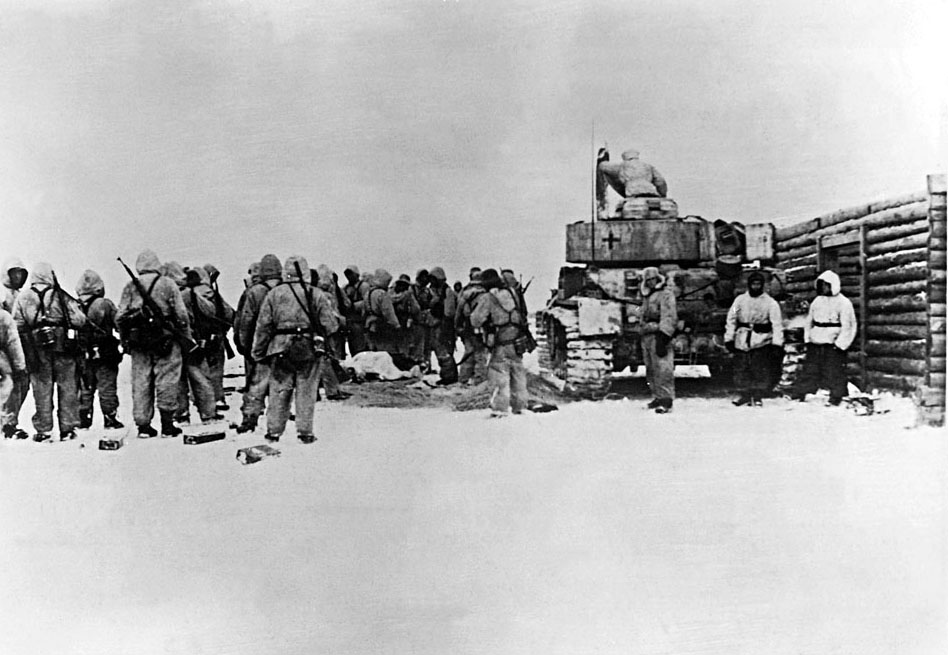2-5 March
Sea War, Pacific

At the Battle of the Bismarck Sea eight Japanese transports and eight destroyers are attacked while sailing from Rabaul to Lae in New Guinea. US and Australian aircraft and torpedo-boats sink all the transports and four destroyers. The Allies lose six aircraft; the Japanese 25. This is the last Japanese attempt to reinforce their presence in New Guinea.
5 March
Air War, Germany
The British launch a four-month offensive against the Ruhr industrial area. A force of 367 bombers strikes the Krupp Works at Essen in the first attack; 14 aircraft are lost.
6-9 March
Africa, Tunisia
The Germans attempt to disrupt General Bernard Montgomery’s preparations for a final offensive at Medenine, south of the Mareth Line. They attack across a broad Front but fail to concentrate and are decisively thrown back. Field Marshal Rommel, whose morale and health are both deteriorating, leaves North Africa.
6-20 March
Sea War, Atlantic
Two Atlantic convoys (HX-229 and SC-122) fight a running battle with 20 U-boats of a ‘Wolf Pack’; in the Atlantic. Although 21 ships are sunk, only one U-boat is lost. The Allies cannot afford such attrition.
13 March
Home Front, Germany
An unsuccessful assassination attempt is made on Adolf Hitler by army officers. They place a bomb in his aircraft but it fails to explode.
14 March
Eastern Front, Ukraine
After his spearheads reached the Donets River, Manstein’s forces have trapped and destroyed the Soviet Third Tank Army. In all, the Red Army has abandoned nearly 6,000 square miles (9,600 sq km) of newly-won ground in the face of Manstein’s brilliant armoured counteroffensive, which has stabilized the German Front in southern Russia. Manstein has averted a total Axis collapse.
15-31 March
Eastern Front, Ukraine


Germany’s Army Group Don recaptures Kharkov, and Belgorod three days later. By the end of the month the Soviet Voronezh Front is back on the east bank of the northern Donets. The final phase of Manstein’s offensive - a combined attack with Army Group Center’s Second Panzer Army heading south from Orel toward Kursk - is halted by the spring thaw.
This victory encourages the German high command to launch Operation Citadel, an ambitious plan to destroy the Soviet Central and Voronezh Fronts in the Kursk salient to the north of Kharkov. Over 500,000 Red Army troops occupy Kursk and a bulge of land stretching 100 miles (160 km) westward from the Soviet line.
20-28 March
Africa, Tunisia
Allied forces under General Bernard Montgomery launch a carefully-planned attack against the Mareth Line. The line’s principal defenses along the banks of the Wadi Zigzaou are penetrated on the 21st-22nd but the 15th Panzer Division successfully counterattacks. Montgomery, however, develops an outflanking move into a major offensive, and by the 26th the Axis forces have retreated northward to the El Hamma Plain. The weakened German forces fall back to Wadi Akarit by the 28th, while many of their Italians allies surrender.
26 March
Sea War, Pacific
At the Battle of the Kommandorsky Islands in the Bering Sea, two US cruisers and four destroyers engage four Japanese cruisers and five destroyers. The Japanese abandon the action just before they can exploit their numerical superiority. Both sides have a cruiser badly damaged.
27 March
Africa, Tunisia
General Sir Harold Alexander sends the US 34th Infantry Division to seize the Foundouk Pass but heavy artillery fire halts its advance.
30 March
Sea War, Arctic
Britain suspends the Arctic convoys to the Soviet Union because it cannot provide enough escorts to guard against the increasing number of German warships in Norway.
